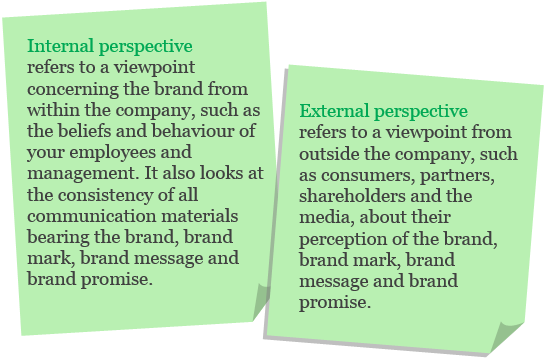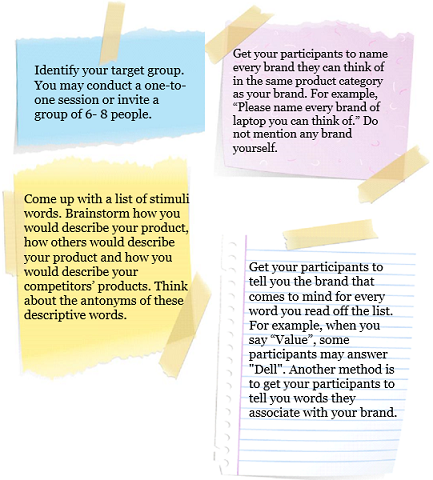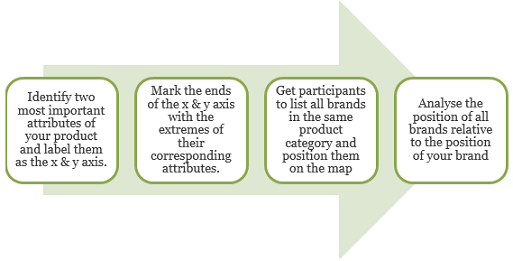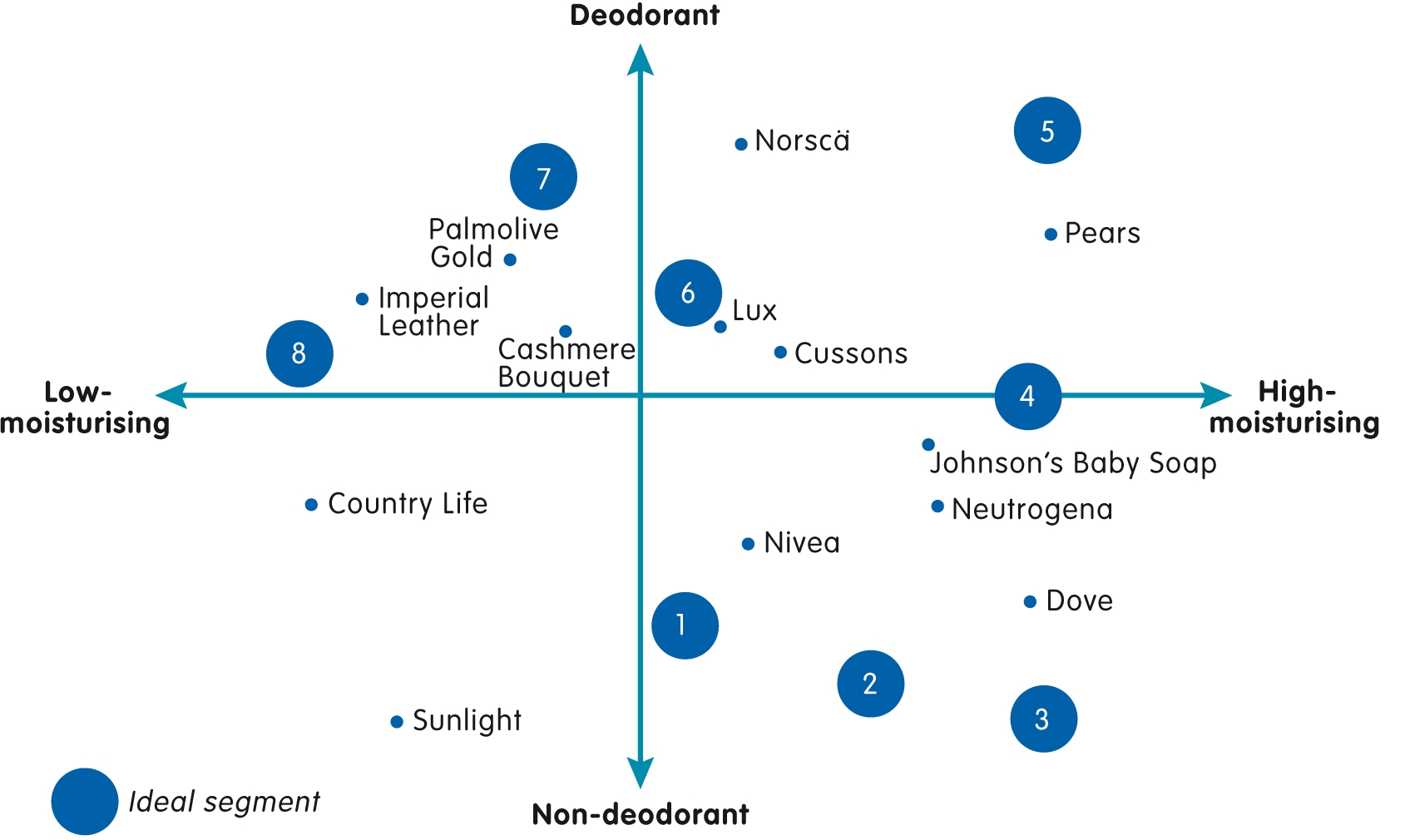What is brand audit?
A brand audit is an assessment of your brand from internal and external perspectives to find out how it is being marketed and how it is being perceived by others.
Brand audits have to be conducted on a regular basis to ensure that the way you think you are portraying your brand is aligned with the customers’ perception of your brand. With this exercise, gaps identified can then be immediately rectified to ensure that no damage is done to your brand and consistency can be maintained in your branding activities.
A match in internal and external perspectives means that what you are trying to communicate is being accepted, understood and remembered by consumers. Any mismatch in internal and external perspectives may result in ineffectiveness or undesirable outcome for your company and brand.
What is Internal Brand Audit?
An important part of an internal brand audit is to look at how your brand is being communicated to employees, find out if they understand your brand and whether they know their role in disseminating the brand message.
>> Believe in your brand.
- Do your employees understand the brand, brand message, promise and values?
- What is your employees’ perception of your brand?
- Do they believe in the brand? Are they inspired to act according to the brand values?
- Do the employees see management consistently modelling the brand values?
>> Communicate your brand.
- Do your employees understand what the company is offering to customers through your brand?
- Do they communicate your brand consistently to external stakeholders?
>> Deliver your promise.
- Do your employees deliver on the brand promise?
- Is this behaviour consistent throughout the organisation?
Tip
Interview with Employees
1) Prepare your interview questions and tailor them according to different employees.
2)Generate a back-and-forth conversation so that the interviewee is put at ease.
3)Your interview should be detailed and long enough such that your interviewee can feel your sincerity and effort to hear them out.
4)Make sure all your questions are answered. Guide your interviewee back on track if necessary.
5)Include open-ended conversation to gather unexpected insights.
You will also need to look through all your marketing and corporate materials, product packaging and any other items bearing your brand.
Go through the following checklist to check for appropriate and consistent delivery of your brand message.
Define your brand.
- What is your brand positioning? How do you want customers to perceive you?
- What is your brand message? Is it clear and easy to understand?
- What is your brand promise? Is it attainable?
Communicate your brand.
- Do your corporate colours complement your brand?
- Do the language and ideas used complement your brand?
- Are you using appropriate images and photos that are consistent with your brand image?
- Do all your materials & packaging bear the same brand mark and corporate colours?
- Is the medium you are using to communicate your brand effective in reaching out to your intended customers?
Deliver your promise.
- Do your marketing activities deliver a consistent brand message?
What is External Brand Audit?
In an external brand audit, you will need to engage consumers to understand what and how they think and feel about your brand.
Brand Awareness
- What is consumers’ level of awareness of your brand? Do they know your brand?
Brand Message
- Are your intended customers receiving the brand message?
- Do consumers understand what you are trying to say through your brand?
- What is consumers’ perception of the medium you are using to communicate your brand message?
Brand Perception
- What is consumers’ perception of your brand and products?
- What is consumers’ perception of your company’s values? Is your brand supported by your company’s values?
- What do consumers associate your brand with?
- What are some positive signs towards your brand?
- What are consumers’ expectations of your brand?
A direct approach to external brand audit gathers direct responses on what consumers think and feel about your brand.
How to conduct external brand audit?
Focus group is a popular method used to gather opinions on a company’s products or services. It is relatively inexpensive and easy to conduct and can yield valuable information for your company to identify gaps and improve. You may follow the guidelines below on conducting your own focus group.
Tip
Tips for Conducting Focus Groups
1) Your focus group session should not be more than an hour or so. Remember that the average adult’s attention span is only 20 minutes.
2) Your questions should move from general to specifics.
3) You may wish to prepare a script outlining the sequence of events to facilitate the session. It will also help you stay on track and on time.
4) Limit the number of participants to 8 ~ 12.
5) Be appreciative of your interviewees. Remember they are your customers. Thank them for their time and give each participant a token of appreciation. This could be cash or a sampling of your product.
As with a focus group, you need to define your purpose and identify your interviewees to conduct personal interviews with.
Suggest a date and time for an interview session for each participant instead of leaving it open-ended. This facilitates the fixing of appointments and gives you greater control over the period during which all interviews can be completed.
When developing the questions, remember that they should address what you seek to find. Always try to keep your questions open-ended by starting them with Who, What, Where, When, Why and How. Starting a question with “Do you…” solicits a “Yes” or “No” answer. Remember that you need to open up the conversation to get people to express their thoughts freely.
Record your interviews if the interviewees are comfortable with the idea and it will not cause them to be hesitant in speaking. You can then make short notes and concentrate on engaging your interviewees to get them to provide honest feedback and deeper answers. Remember that you need to ask for permission from your interviewees if you wish to record them, and give them the option of opting out if they are uncomfortable.
Tip
Tips for Conducting Personal Interviews
1) Ask the question, and then pause to allow interviewees to gather their thoughts. Do not offer answers for them to choose from.
2) To avoid misinterpretation, summarise key points along the interview and repeat it to your interviewees to confirm or clarify.
3) While conducting the interview, be neutral, even-toned, and accepting.
4) Be appreciative of your interviewees. Remember they are your customers. Thank them for their time and give each participant a token of appreciation. This could be cash or a sampling of your product.
An indirect approach to external brand audit utilises projective techniques to uncover deep-rooted thoughts that may not surface as a result of direct questioning.
It allows you to understand your customers’ true feelings about your brand by tapping on their underlying thought processes that may not be immediately available or obvious even to themselves.
Tip
Other Possible Association Methods
User Association
Find out the profile of typical users of your brand.
- Ask about demography (age, gender, income, education etc.)
- Ask about lifestyle
Usage Association
Find out the reasons customers use your brand.
- Ask about the occasion when your brand was chosen
- Ask about the mood associated with the usage
Personality Association
Find out what your brand personality is.
- Ask if your brand was a person, what would its personality be like?
Analysing perceptual maps allows you to see what you need to do to strengthen or reposition your brand.
Competitors' brands placed near your brand are perceived by your customers to have similar attributes with your brand. They are your immediate competition, targeting the same group of customers for their dollar.
An example of a perceptual map on soap is shown below. A consumer who wants to buy a deodorant soap with low moisturising qualities will consider Palmolive Gold, Imperial Leather, Cashmere Bouquet and even Lux. Sunlight on the other hand will not be considered due to its perceived non-deodorant quality.




